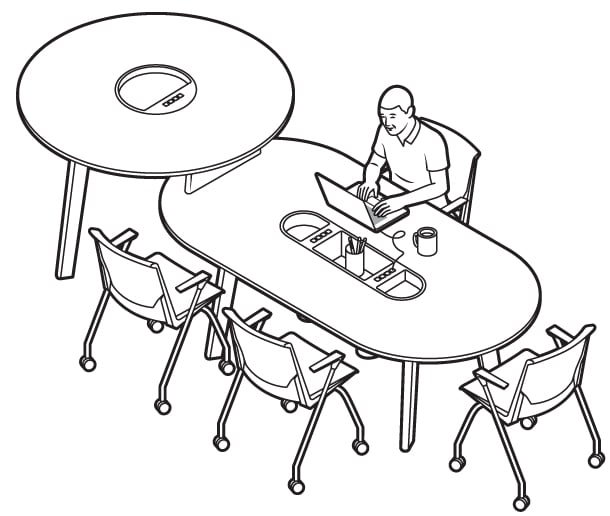
June 8, 2018
The Best Companies Grow and Change Shape. Shouldn’t Their Offices Do the Same?
Haworth’s Organic Workspace strategy treats the office like a living organism.

Despite the enormous cultural and technological shifts that emerged at the turn of the new millennium, workspace design and manufacturing remained focused on objects. Recognizing this as a problem early on, in 2004, Haworth introduced Organic Workspace, a flexible envelope free to contract and expand based on customer needs. “We wanted to create something that has the intelligence to adapt to the changes that culture, technology, and people have inserted into the work environment,” says Franco Bianchi, Haworth president and CEO.
Since joining the company in 1992, he has helped Haworth pivot the conversation from one centered on products to one that encompasses a more holistic, systems-based understanding of the workplace. For Bianchi, the “design-once office,” where elements remain unchanged for the duration of the organization’s lease, is not sustainable—neither for business nor the environment. “As people, we change and evolve, and the space should evolve with us,” adds Haworth’s global brand director, Kurt Vander Schuur. “Put very simply, this system is like a living organism.”
According to Vander Schuur, the principles that underpin Organic Workspace are key to contemporary office design. Today, a workplace is less about the static architectural elements it contains and more about the workers within it. Rather than obsessing about efficiency, the industry is moving toward solutions that support workers in finding satisfaction in their surroundings. “It is no longer enough to be a furniture provider,” Vander Schuur says. “We have a lot more data that shows that keeping your people engaged and happy has a huge return on your business.”
Organic Workspace is a process and an out-come. As a process, Organic Workspace starts with the individual, considering their needs, user control, and well-being. Next, it takes into account the work team and issues of culture, collaboration, and interaction. The third element is the floor plate, where real estate needs and facility operations come into play. Finally, at the highest level, Organic Workspace assesses the entire organization and its business drivers.
The outcome, says Paul Nemschoff, global strategy and marketing vice president, is design freedom and choice through products (freestanding and systems furniture), architectural systems (movable walls), and applications including technology integration that “meet the needs of an organization and the pressures for constant change.”
Organic Workspace, then, is a thoughtful balance between a scientific and a design-led approach. In seeking to make space more flexible, responsive, and cost-efficient, Haworth has drawn from an extensive research network that includes both in-house departments and collaborations with outside partners such as the Royal College of Art in London and the University of Michigan’s Ross School of Business. “There is a key element of research—of observation and measurement,” Bianchi says. “But there is also a human side. When people walk into a building, we want them first to feel the entirety of the space and then enjoy its parts.”
This is precisely the quality that makes and will make spaces compelling, today and in the future. “A lot about the office can be rational, but there is also a portion that should speak to your senses in a very profound way,” Bianchi concludes. “That to me is good design. In a world where we do not need to be in an office to do work, we have the responsibility to create environments where everything—space, furniture, and technology—is designed to be efficient and to allow our best work.”








